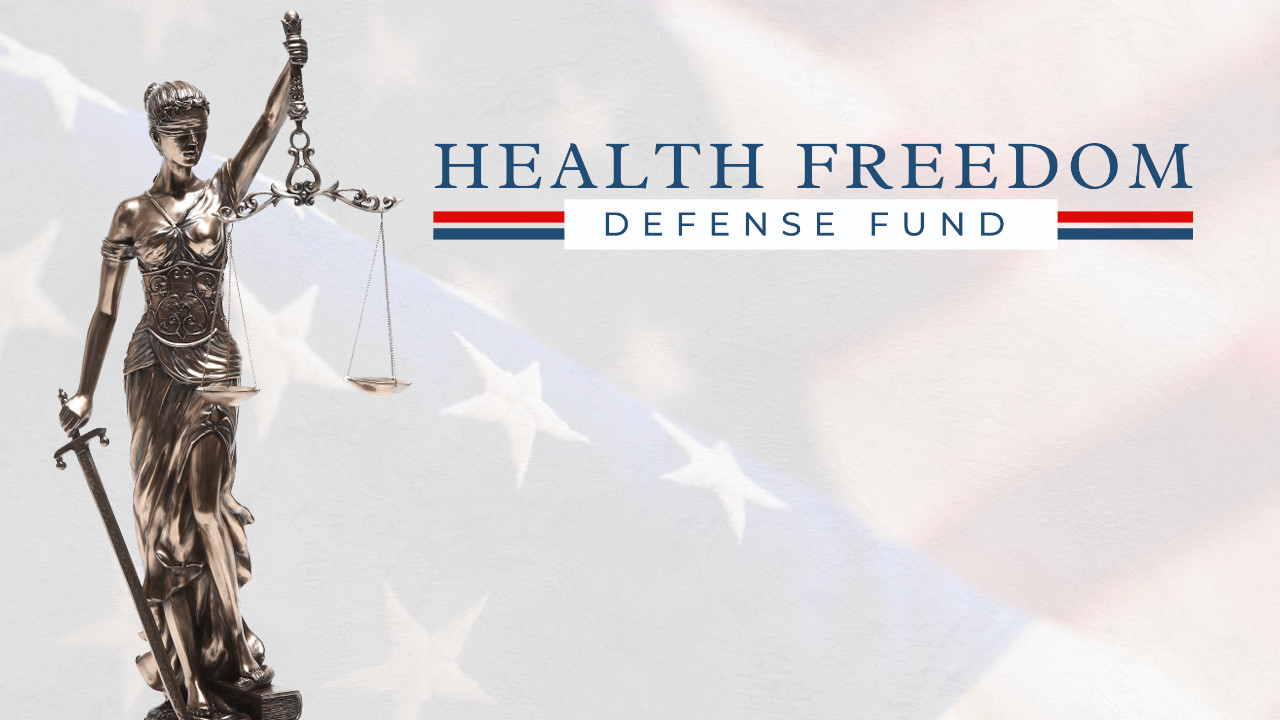
On May 27, 2025, Secretary Kennedy, NIH Director Bhattacharya, and FDA Commissioner Makary released a brief message to the public outlining changes to the CDC’s recommendations for licensed Sarscov-2 and/or EUA-covered countermeasures (CCMs) in broad terms, specifically that there would no longer be a recommendation for these injections for “healthy” children and pregnant women.1
However, the details on how this announcement would play out in formal policy were not yet released, including how and when the CDC would update its guidance documents and how this announcement complements or potentially conflicts with other policy changes published by leadership in recent statements and journal articles. Continuing recommendations for those with chronic conditions is a startling development, given that immunocompromised people were not allowed to enroll in the Pfizer and Moderna clinical trials, so there is very poor safety data for those groups compared to others.
Several days later on May 30, CDC’s guidance to “healthcare providers”—the guidance for parents has not yet been posted—was updated employing an approach new to the recommendations for Covid-19 injections on the child and adolescent vaccination in the “healthy” sub-groups—termed “shared clinical decision-making.” According to the website, Advisory Committee on Immunization Practices (ACIP) created this approach for a handful of optional vaccines, for which “[s]hared clinical decision-making vaccinations are individually based and informed by a decision process between the health care provider and the patient or parent/guardian.” In the end, the Sarscov-2 CCMs stayed on the recommended schedule with “notes” attached to briefly elaborate on the process, maintaining legal liability immunity for the manufacturers of the CCMs due to its inclusion on the schedule.
It would appear that the intention of HHS leadership seems to be to formalize in the CDC recommendations an implicit constraint on medical providers and an increased level of agency among parents and guardians of healthy children as they decide whether or not to inject the CCMs in this specific demographic group. This is laudable, in principle, but this policy transforms whichever person administering the injection (it could be a pediatrician, a school nurse, a pharmacy technician, etc.) into a required participant in the decision-making process, wherein the patient or parent should clearly have a simple right of refusal generally and informed consent rights specifically. Remember, those third parties are mandated reporters—what happens if a parent doesn’t share the same opinion and goes “against medical advice?”
Outside of this group of “healthy” children, the HHS announcement and CDC update seems to assert that for immunocompromised children these meager rights to parental involvement may not apply, and the vaccination occurs by “default,” though there is some language in the CDC notes about the “shared clinical decision-making” that suggests it could still play a role somehow for this group. This needs to be clarified.
More broadly speaking, whether intended or not, regarding other injections, curiously parents and guardians are not explicitly granted those dubious “decision-process” rights even to confer with their medical care providers on the course of action, and certainly do not appear to possess the critical right to veto medical decisions for their children.
This is made clear in the following statement:
“Unlike routine, catch-up, and risk-based recommendations, shared clinical decision-making vaccinations are not recommended for everyone in a particular age group or everyone in an identifiable risk group. Rather, shared clinical decision-making recommendations are individually based and informed by a decision process between the health care provider and the patient or parent/guardian.”
Importantly, by exclusion and explicitly, this announcement asserts that any non-CCM injection is not “individually based.” Unfortunately, this approach erodes yet again the foundation of medical freedom that HFDF works so hard to secure in the courts, by formally stating that with “routine, catch-up, [or] risk-based” injections, there is not even the partial decision-making power granted to the parents or guardians for non-CCMs. The CDC website clarifies this further:
“The key distinction between routine, catch-up, and risk-based recommendations and shared clinical decision-making recommendations is the default decision to vaccinate. For routine, catch-up, and risk-based recommendations, the default decision should be to vaccinate the patient based on age group or other indication, unless contraindicated.”
We are compelled to point out that injecting children with pharmaceutical products—products that the National Childhood Vaccine Injury Act and the U.S. Supreme Court in Bruesewitz v. Wyeth acknowledge can cause injury or death in some recipients—highlights the profound absurdity of this so-called “default” policy.
There is no mention of informed consent, of allowed objections, or of parental rights, autonomy, or risk deliberation; only medical contraindications, which require full clinical knowledge and patient history, information not available to school nurses or pharmacy workers, or vaccine pop-up clinics. This empowers medical care staff, clinicians, pharmacists, and school nurses (many with no clinical expertise) to actively assume a role in making health care decisions for children through a “decision process” that will surely involve undue pressure, rather than a thorough review of medical history, clearly sharing risk and benefit information (if known), and presenting options for a parent’s final approval or rejection.
It should be noted that rather than a “decision process” or back-and-forth discussion with a nurse or physician, the principle of informed consent is a right to be informed of risks and benefits, and then to consent or to reject the intervention or medication.
HFDF calls for absolute acknowledgement of parental and guardian rights for all medical decisions based upon proper and complete voluntary informed consent. We call on HHS to review all vaccines currently classified as the “default scenario” on the CDC schedule to be reclassified as “shared clinical decision-making”. That review should address safety and efficacy, clinical trials and track records, and costs and benefits. We also request a review of all ACIP decisions since 2010, with elevated scrutiny of those vaccines approved without opposition in voting.
Disparate treatment of “healthy” and “unhealthy” children with language so confusing that ACIP itself regularly debates it during its meetings undermines parental rights. The concept of “shared clinical decision-making” suggests HHS and its daughter agencies believe medical professionals should be co-decision makers rather than consultants in service of parents who make all medical decisions for their children.
Annex 1. Trouble with Terminology
The recent concept of “shared clinical decision-making” is unevenly worded for “healthy” children vs. immunocompromised children. FDA and CBER leadership have in recent days released a list of complicating conditions for high-risk outcomes vis-à-vis Sarscov-2, so presumably the immunocompromised moniker will roughly adhere to that list of conditions (obesity, mental health issues, depression, inactivity, etc. are all high-risk “conditions” listed by Prasad and Makary in the New England Journal of Medicine). This needs to be clarified urgently.
Among the “healthy” children, the shared clinical decision-making language is:
“Shared clinical decision-making vaccinations are individually based and informed by a decision process between the health care provider and the patient or parent/guardian. Where the parent presents with a desire for their child to be vaccinated, children 6 months and older may receive COVID-19 vaccination, informed by the clinical judgment of a healthcare provider and personal preference and circumstances.”
Among the moderately or severely immunocompromised it includes this slightly different language for how the shared clinical decision-making might apply for this large group of children:
“Shared clinical decision-making vaccinations are individually based and informed by a decision process between the health care provider and the patient or parent/guardian. This provision would allow for COVID-19 vaccination in children aged 6 months and older based on shared clinical decision-making, allowing for vaccination of immunocompromised children.”
The ambiguity of the terms “would allow” vs. “may receive” etc. only lead to further confusion that must be clarified if this approach remains in place.
Annex 2. Questions for CDC:
• How does the concept of “default” vaccination conform to the principles of informed consent? How does it conform to parental rights?
• Is introducing a requirement for mandated “decision process” with medical staff or pharmacy workers (with no required prior experience working with a specific patient) an appropriate way to reach a decision on side effects, drug-drug interactions, and personal risk? Are these workers trained in statistical analysis, pharmacokinetics, or other relevant fields of study? Is this a replacement of informed consent?
• Is CDC asserting that parents may not participate in clinical decision-making for their children with non-covid vaccinations?
• Is CDC asserting that parents may not participate in clinical decision-making for their children, merely due to the fact that they are deemed (by someone, sometime) as immunocompromised?
• How can HHS justify NOT removing the underlying emergency designation/declaration currently in force until 2029, which extends EUA exceptions and regulatory laxity to “high risk” groups not included/studied in the original Pfizer and Moderna clinical trials?
The CCMs in question are covered under blanket immunity provisions due to inclusion on the CDC schedule, but are also doubly protected under the PREP ACT’s emergency law measures and through the Emergency Use Authorization mechanism activated by the declaration of emergency by the HHS Secretary Azar and then Becerra, currently active until 2029. This grants EUA-approved CCMs fewer manufacturing controls and no requirement for inspections, and a prohibition on any authority to deem a product as adulterated or dangerous, alongside other privileges.
Yours in education and choice,
Leslie Manookian
President/Founder
Health Freedom Defense Fund
HealthFreedomDefense.org
I would like to thank Tom Nicholson and Valerie Borek (of Stand For Health Freedom) for their help and expertise on this post.
- The CCMs in question are covered under blanket immunity provisions due to inclusion on the CDC schedule, but are also doubly protected under the PREP ACT’s emergency law measures and through the Emergency Use Authorization mechanism activated by the declaration of emergency by the HHS Secretary Azar and then Becerra, currently active until 2029. This grants EUA-approved CCMs fewer manufacturing controls and no requirement for inspections, and a prohibition on any authority to deem a product as adulterated or dangerous, alongside other privileges. ↩︎
Note: This post has been updated to remove Susan Monarez from the first paragraph as she did not appear at the announcement because once nominated and during pendency of her nomination, she is not permitted to appear. In addition, the HFDF’s call to action has been expanded.














